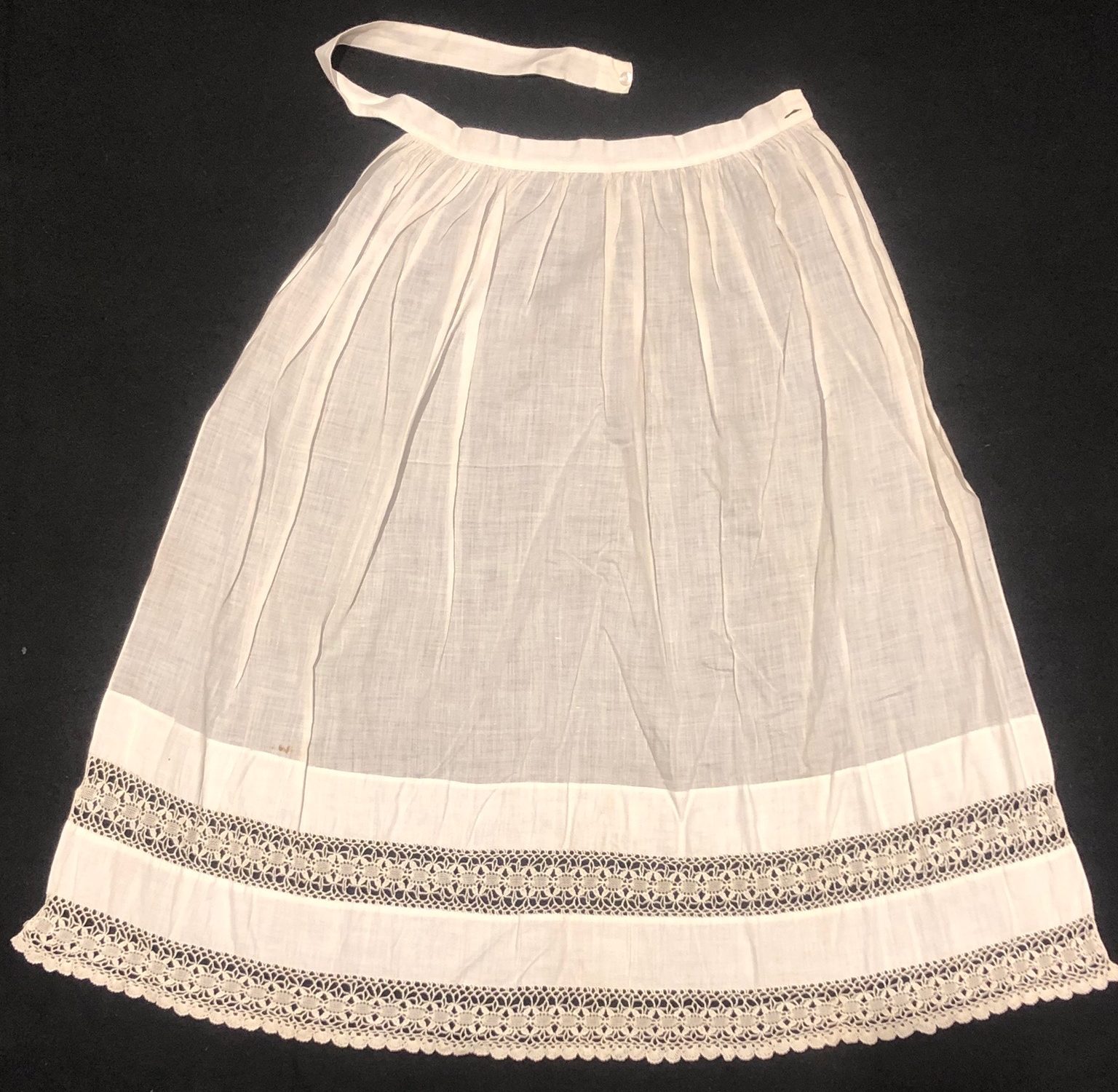This plain weave apron is quite dainty and has intricate lace detail on the bottom which adds some style and interest to the common maid’s apron. Maid or servants dress would have been quite simple, so this small detail would have helped her to stand out, especially when she was serving the family or guests.
This apron may have even been worn by a servant who did primarily work upstairs, who was often in view of guests who aimed to judge the household’s wealth. Servants who worked doing more menial tasks would not have had such good quality aprons and may have only used a cloth. A maid’s appearance was a marker of her own class status but if she had wealthy enough employers, they may supply her with nicer aprons which would have symbolized their tastes and ability to spend money on their servants.
Female domestic servants were “distinguished by their aprons.” Based on the color, style, and fabric, a servant’s role in society could be identified. This had been true for centuries since white aprons, though they often changed slightly, were always markers of the domestic servant class.
Levitt, Sarah. Victorians Unbuttoned: Registered Designs for Clothing, their Makers and Wearers, 1839-1900. London: George Allen & Unwin, 1986, 177.
Cunnington, Phillis and Lucas, Catherine. Occupational Costume in England: From the Eleventh Century to 1914. New York: Barnes and Noble Inc., 1967, 377.
White Cotton Apron, Historic Clothing Collection, Smith College, Northampton, MA. 2011.8.125
